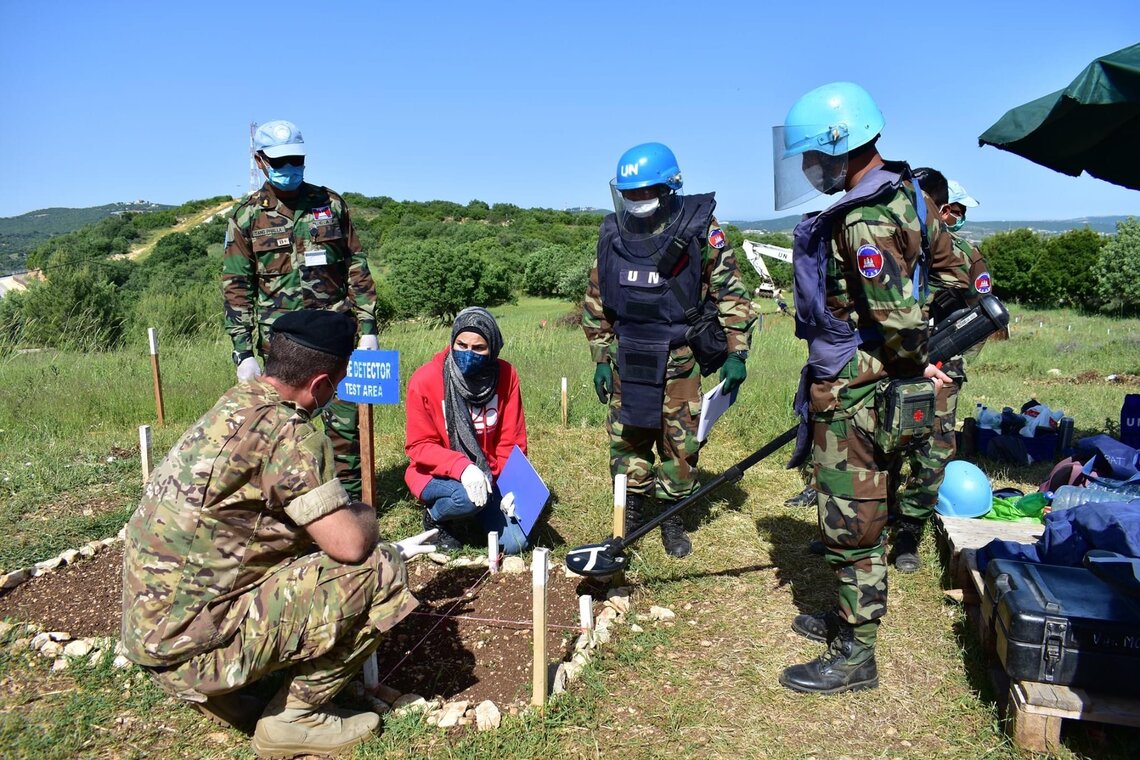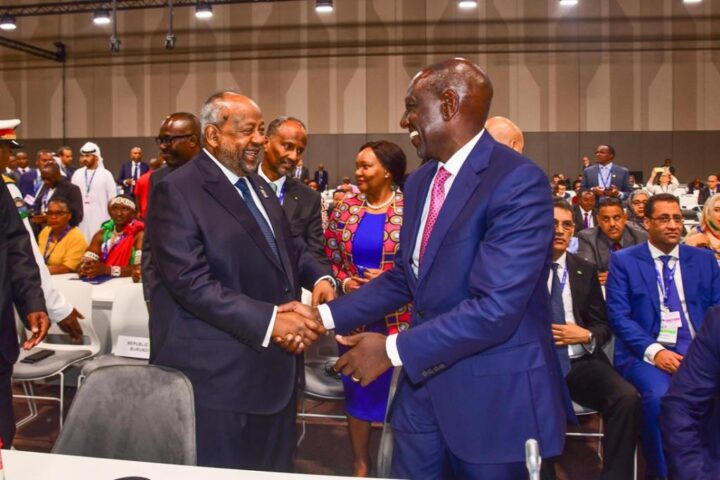#Mineaction KEY HIGHLIGHTS:
Nigeria recorded 68 explosions in first three months of 2023, 1,490 Fatality Rate in 7 years
Of the 8.3m people in need of conflict-induced humanitarian assistance in the Northeast states of Borno, Adamawa And Yobe, 1.2 million of them are in need of Mine Action
Out of the 8 million in need, the United Nations Mine Action Service (UNMAS) targets 6 million people for humanitarian assistance; of these, 1.4 million are internally displaced persons (IDPs)
Ten (10) states – Abia, Anambra, Bayelsa, Benue, Cross River, Ebonyi, Enugu, Imo, Lagos, and River – still need close study to ascertain their status as hazardous areas after the Nigeria-Biafra Civil War
Nigeria’s high tendency to armed conflicts has left a trail of mines, explosives and loose-lying ordnances, especially in the northeast.
The situation has led to a surge of victims of mine accidents among law enforcement agents, ordinary citizens and internally displaced persons. This year alone, 68 incidents of mine explosions have been reported in Nigeria, including at least six fatalities. A seven-year estimate from 2016 to 2023 puts the fatality rate at 1490, while the reported cases of injuries stands at 2,468.
Join our WhatsApp ChannelOf the identified 8.3 million people in need of conflict-induced humanitarian assistance in Borno, Yobe and Adamawa States, 1.2 million have been identified as being in need of mine action.
However, the United Nations Mine Action Service (UNMAS) is targeting 6 million people for humanitarian assistance out of the 8 million in need. Of these, 1.4 million are internally displaced persons (IDPs).
READ ALSO: WHO Expands Health Services Support For The Vulnerable In Northeast
Nigeria became a signatory to the UN Mine Ban Treaty in 2001, and has since experienced many setbacks in its demining efforts in terms of implementation and legislation. A concatenation of socio-political instability and poor record keeping are playing important roles in miscalculations in the areas of casualties of mine accidents, existing mine stockpiles and efforts to research with them or to destroy them.
There are still echoes of undestroyed mines from the 1967-70 civil war in the country. Ten (10) states: Abia, Anambra, Bayelsa, Benue, Cross River, Ebonyi, Enugu, Imo, Lagos, and River still need close study to ascertain their status as hazardous areas after the Nigeria-Biafra Civil War.
Nigeria’s declaration in November 2011 that it had rid its territory of mines and other explosives was three months earlier than a March 1, 2012 date required by the UN Mine Ban Treaty for the country to destroy all antipersonnel mines in contaminated areas under its jurisdiction.
Prior to this date, the country had recorded fewer than 10 cases of mine explosion accidents, though this was also attributed to a poor regime of casualty tracking.
Unluckily, Nigeria’s promptness coincided with a fresh onslaught of insurgency that would pave the way to another season of landmine farming.
The Northeast remains the worst hit in the over 15 years of terrorism resurgence in the country. The armed combat between the military, a multi-national joint task force (JTF) and the Boko Haram insurgents has not only been a story in deadly gun battles and explosions, it has also led to the burying of a yet-to be determined number of mines.
As of 2015, an Inter-ministerial Committee report on Borno, Adamawa and Yobe States showed mines and explosives implantations such as antipersonnel and anti-vehicle mines, a variety of body-borne, vehicle-borne, and remotely controlled devices, as well as cluster munition remnants, mortars, rockets, and rocket-propelled grenades, hand grenades, and Man-Portable Air Defense Systems (MANPADS). Farming, rehabilitation of IDPs and refugees, and even traffic have been affected and led to mounting humanitarian and food crises as a result of mines and explosives. There is unfortunately a difficulty in tracking of cases due to the absence of a surveillance system, in addition to the politics of enumerating the injured due to associated entitlements.
The resurgence in mines meant that Nigeria was infringing on its commitments toward the Mine Ban Treaty. Consequently, the country has since asked for an extension as of 2019 when it lodged a formal complaint to the UN about a fresh and substantial mine contamination of its territory.
Despite the request for an extension, there is the problem determining the extent of the mine contamination as well as a dearth of the needed intelligence and capacity in the army, police and paramilitary groups, which are responsible for demining affected areas.
The situation is compounded by a lack of functional legal framework to deal with arrested insurgents. A 2019 disability rights law have yet to record positive reports of enforcement.
The poor state of at least 62% of health facilities in much of the northeast has meant that victims of mine explosions suffer a great deal more than necessary. The poor state of health facilities is conjoined by a fragile educational system, which hampers the spread of self-protective information to disadvantaged groups such as children, girls, women and people with disability. At least 95% of accidents have been linked with self-activated, improvised explosives.
To this end, aid groups, national and international not-for-profits, and governments need to step us action in health assistance, rehabilitation, education and psychological support. Such support has been provided by the UNMAS, which provides primary risk education to internally displaced persons, refugees, returnees and host communities.
Nigeria may also need intelligence support to provide needed data on the areas of mine infestation and demining strategy to protect ordinary citizens and deminers.
Notably, the country failed to meet up with a December 31, 2021 date to provide detailed information on improvised explosives devices planted by terror groups. The date is a timeframe the country set for itself in the deadline extension requested in 2019.
There is need for cooperation between stakeholders, non-profit organizations and governments to support the demining mechanisms set in motion by Nigeria such as the Inter-Ministerial Committee for mine action, work plan and survey. Such cooperation will help in developing a structured mine action program for Nigeria in the areas of explosive disposal activities and management of the information system. Support is needed in victim assistance coordination, risk education for aid workers, civil society organizations and ordinary citizens.
Thankfully, UNMAS has delivered risk education on explosives and mines to over two million beneficiaries from law enforcements agents, civil society groups, ordinary individuals and aid groups as of late February 2023. There is improved reports of police capacity in disposing of IEDs. Remarkable achievements have also been recorded as of July 2022 in manpower training to drive the UNMAS-assisted, fully developed information management system for mine-related data.
#MineAwareness
#landmines
#4april
#Mineaction














![Gender Activism An Economic Necessity In Africa [PBA Editorial]](https://www.primebusiness.africa/wp-content/uploads/2023/11/vaw-720x480.png)
Good